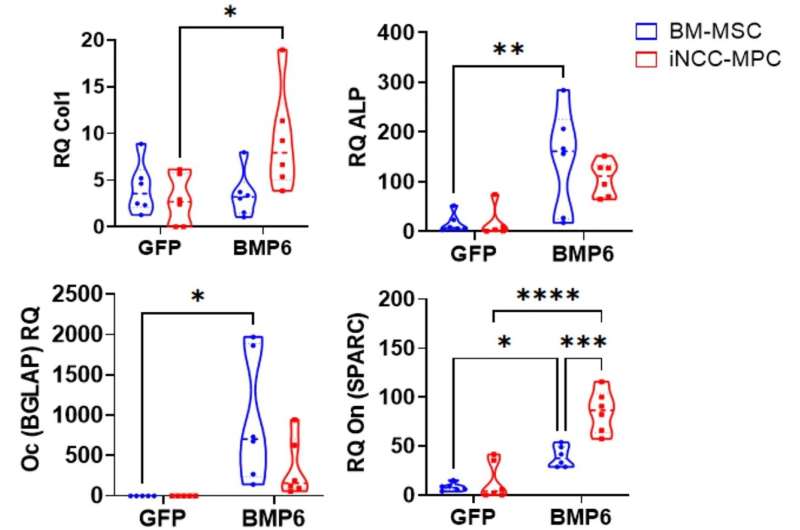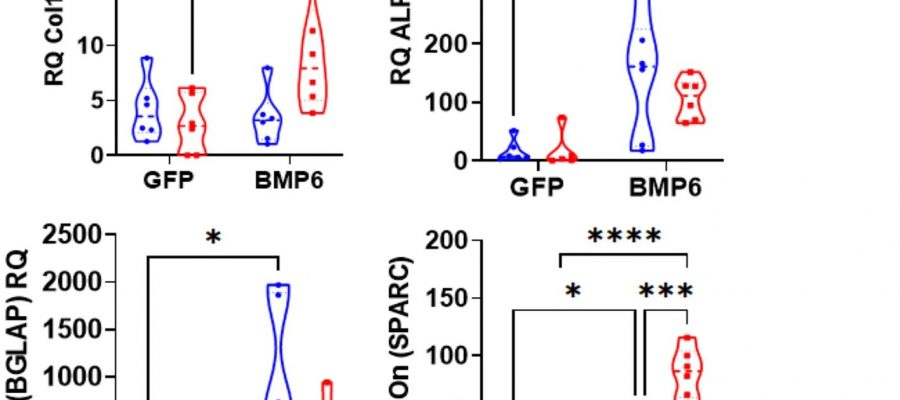
Two new discoveries led by Cedars-Sinai investigators show stem cell therapies can help accelerate and promote the healing of bone and tendon injuries.
“We’re using developmental biology and stem cell technology to repair and regenerate damaged bones and tendon tissues, which has the potential to dramatically alter patient outcomes,” said Dmitriy Sheyn, zoloft tabs Ph.D., assistant professor in the departments of Orthopaedics, Surgery and Biomedical Sciences at Cedars-Sinai.
Using iMSCs to repair tendon and ligaments
In the first study, published in the Journal of Orthopaedic Research, Cedars-Sinai scientists showed that specialized engineered stem cells called induced pluripotent stem cell-derived mesenchymal stromal cells (iMSCs) can regenerate and repair the tendon more effectively than other types of cells.
The finding is a step forward in developing an efficient cell-therapy approach for repairing injured tendons and ligaments, which is a significant concern in sports medicine. Tendon injuries are often associated with high morbidity, prolonged disabilities and painful rehabilitation periods, during which secondary tendon ruptures can often occur.
“One of the main advantages of using pluripotent stem cells is that they potentially represent an unlimited source of tenocytes, the cells in tendons and ligaments,” said Sheyn, who is also an investigator in the Cedars-Sinai Board of Governors Regenerative Medicine Institute. “These cells could also one day offer an off-the-shelf allogeneic source for tendon cell-therapy applications.”
The tendon—which is a soft tissue that connects muscles to bones or, in case of ligaments, bones to bones—has very low capacity to heal, and tendon tears or ruptures can cause extreme pain. Even after the tendon heals, it never goes back to the same function as before the injury and has high rates of re-rupture.
To find a way to better repair these injuries, investigators looked to iMSCs.
Sheyn, who is the senior and corresponding author of the study; Angela Papalamprou, Ph.D., who is a postdoc in the Sheyn Laboratory and first author of the study; and the study team engineered the cells to produce a transcription factor called scleraxis, which is important in tendon development.
They found iMSCs were able to successfully increase the amount of scleraxis that was produced, which helped the iMSCs form tendon-like tissue and become more like tendon cells.
Then they exposed the cells to a type of mechanical stress called cyclic loading, which is a process that helps guide the iMSCs to develop into tenocytes.
“While further studies are needed to determine the full potential of these modified iMSCs for tendon repair, the results showed that the iMSCs can effectively change into tendon cells and show promise as a potential cell therapy for tendon repair,” said Sheyn.
Repairing the skull with cranial-specific stem cells and 3D Printing
In the second study, published in Scientific Reports, scientists found using iPSC-derived cranial-specific stem cells and embedding them in a special 3D-printable material can help heal injured bones in the skull.
Investigators found the material, called bio-ink, helped the cells survive and form new bone cells more effectively than other types of cells, like iMSCs. When tested in mice, the combination of using the bio-ink with the cranial-specific stem cells helped repair the skull better than other types of cells that were tested.
“Treating cranial bone injuries is a major clinical challenge,” said Sheyn, the senior and corresponding author of the study. “New regenerative approaches like this one have the potential to be a powerful new option that may help address craniofacial reconstruction needs.”
Currently, when someone has a traumatic skull bone injury, they usually need a graft using bones or synthetic material to repair the wound. While using a person’s own bone is usually the best option, donor-site morbidity is a limiting factor, and using synthetic materials like titanium or polymers is often associated with high rates of infections and complications, especially for children.
Investigators have found 3D bioprinting to be a potential solution. It’s a developing technology that can create scaffolds from different biomaterials that can mimic the shape, size and dimensions of the injury.
However, investigators have found using the 3D bioprinted materials alone is not enough.
“While 3D printing can give us the shape that we want, the problem that we have in the 3D printing field is that we cannot print with cells because the printing technology is not cell compatible,” said Sheyn. “And it’s the cells that will really help with healing and repairing of the injury.”
To see if they can improve the new technology, Sheyn; Giselle Kaneda, a research assistant in the Sheyn Laboratory and study author; and other members of Sheyn’s laboratory tested two bio-inks to see which one provided better viability and better use for cells to differentiate and regrow new cells in the skull that could potentially repair the defect.
They specifically looked at different types of iPSC-derived cells and added a special protein called BMP6 to see if it could help generate viable bone graft alternatives for cranial reconstruction.
They found the combination of the cranial-specific stem cells with BMP6 and the bio-ink stimulated injury healing in the bone more efficiently than when they used iMSCs.
“These results highlight the printability of bio-ink scaffolds and their ability to support stem cell survival and differentiation, making them attractive for craniofacial reconstruction,” said Sheyn.
More information:
Angela Papalamprou et al, Directing iPSC differentiation into iTenocytes using combined scleraxis overexpression and cyclic loading, Journal of Orthopaedic Research (2022). DOI: 10.1002/jor.25459
Juliane D. Glaeser et al, iPSC-neural crest derived cells embedded in 3D printable bio-ink promote cranial bone defect repair, Scientific Reports (2022). DOI: 10.1038/s41598-022-22502-8
Journal information:
Scientific Reports
Source: Read Full Article
